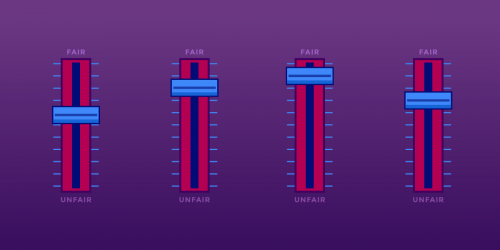Back when you were a kid, you may (depending on your age) have checked books out of your library using a circulation card. The cards, like the one pictured to the right, would allow the librarian to keep track of the books, who had them, and when they were expected back at the library.
This month’s Stupid Patent is awarded to Xerox, who on January 19, 2016 was awarded a patent on essentially the library circulation card, but done electronically.
The patent, U.S. Patent No. 9,240,000, is entitled “Social Network for Enabling the Physical Sharing of Documents.” The patent discusses what it sees as a problem with current methods of sharing documents. Specifically, it says that “systems and methods which enable the sharing of documents among people working in proximate locations, while still promoting worker efficiency and independence, is [sic] needed.” In addition, “there is still a need for an efficient social networking platform which is organization specific and which allows members of an organization to know what other members sitting in the same organizational space are reading, what documents they are amendable to sharing, and to which documents they are providing physical access.”
And how does the patent solve these problems? Claim 11 details one way:
11. A computing system for enabling a physical sharing of a hard copy of a document, comprising:
[a] a plurality of programmatic instructions stored on a medium, wherein, when said plurality of programmatic instructions are executed, cause a client computing device to present a first graphical user interface to a user, wherein said first graphical user interface comprises a plurality of printing options for printing the document, wherein said first graphical user interface comprises an input for receiving an indication by the user that the user is willing to physically share the hard copy of the document within a predefined period of time; and
[b] a computing device for hosting at least a portion of a social network comprising a profile page of the user, wherein said computing device receives at least one of a characteristic of the hard copy of the document, in response to the user indicating a willingness to physically share the hard copy and publishes said characteristic on the profile page of the user, wherein said profile page is accessible to everyone who is connected to the user in a social network, and wherein said characteristic include at least one of title, date, location of document, or location of printing.
This claim is a good example of patent-speak. For various reasons, patent claims are often written in long, obfuscating language that tends to make them difficult to understand for anyone who isn’t a patent lawyer. To be clear: patent lawyers will rightly tell you that every word in a claim is important. This is true. But what is also true is that often times claims include terms—such as “plurality of programmatic instructions stored on a medium”—that are essentially meaningless outside the patent system.
Claim 11, when given a plain English translation, reads something like this:
A computer that, [a] via a GUI, asks the user whether they want to print something using through a variety of methods, and to note whether they want to share the document once printed, for a certain amount of time and [b] if the user says they want to share it, updates the user’s status on their profile page that tells people the name of the paper, the date it will be available and where.
This claim reads as merely a computerized version of the library’s circulation card. A library purchases a book (similar to the printing of claim 11). The library then offers it to one of its patrons, who then decides they would like to borrow it for a certain amount of time. The patron brings the book to the counter, the card is filled out with the patron number and due date, and then placed in the file of all the cards for other patrons to search if they’re looking for that book and when it will become available.

We just gave Xerox a patent on what amounts to sharing a book, but electronically. When considered this way, it is clear that Xerox’s patent is a stupid patent. It deserves our censure. But more importantly, this patent issued this month, on an “invention” from 2011. Ultimately this patent is one of hundreds or thousands of patents that don’t describe actual inventions, but rather just rehash old, obvious ideas “on a computer” using confusing language. The failure of the patent office to prevent this patent from issuing is regrettable, and shows just how dysfunctional our patent system is.









